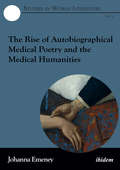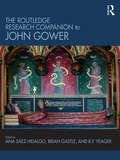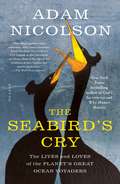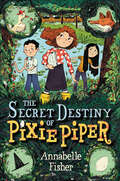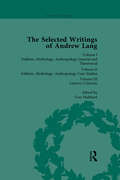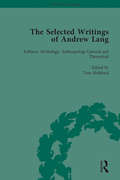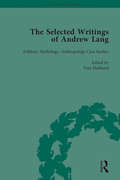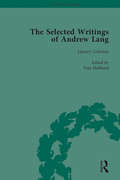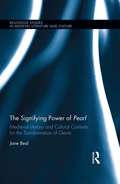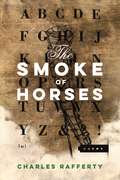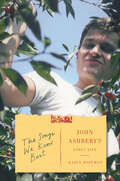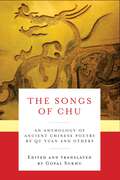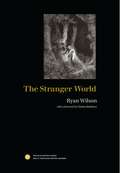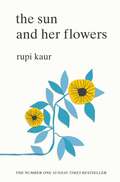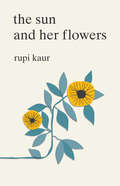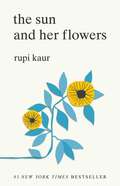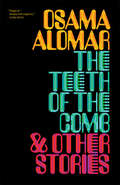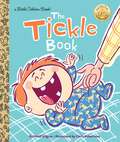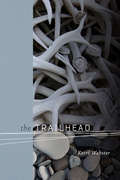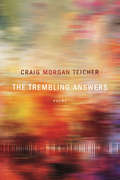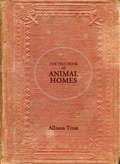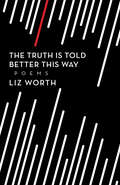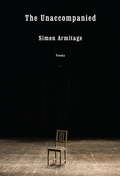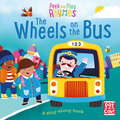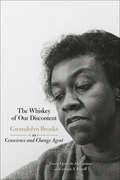- Table View
- List View
The Rise of Autobiographical Medical Poetry and the Medical Humanities (Studies in World Literature #5)
by Johanna EmeneyIn this fascinating book, Johanna Emeney examines the global proliferation of new poetry related to illness and medical treatment from the perspective of doctors, patients, and carers in light of the growing popularity of the medical humanities. She provides a close analysis of poetry from New Zealand, the U.S., and the U.K. that deals with sociological and philosophical aspects of sickness, ailment, medical treatment, care, and recuperation.
The Routledge Research Companion to John Gower
by R. F. Yeager Ana Saez-Hidalgo Brian GastleThe Routledge Research Companion to John Gower reviews the most current scholarship on the late medieval poet and opens doors purposefully to research areas of the future. It is divided into three parts. The first part, "Working theories: medieval and modern," is devoted to the main theoretical aspects that frame Gower’s work, ranging from his use of medieval law, rhetoric, theology, and religious attitudes, to approaches incorporating gender and queer studies. The second part, "Things and places: material cultures," examines the cultural locations of the author, not only from geographical and political perspectives, or in scientific and economic context, but also in the transmission of his poetry through the materiality of the text and its reception. "Polyvocality: text and language," the third part, focuses on Gower’s trilingualism, his approach to history, and narratological and intertextual aspects of his works. The Routledge Research Companion to John Gower is an essential resource for scholars and students of Gower and of Middle English literature, history, and culture generally.
The Seabird's Cry: The Lives and Loves of the Planet's Great Ocean Voyagers
by Adam NicolsonLife itself could never have been sustainable without seabirds. As Adam Nicolson writes: "They are bringers of fertility, the deliverers of life from ocean to land."A global tragedy is unfolding. Even as we are coming to understand them, the number of seabirds on our planet is in freefall, dropping by nearly 70% in the last sixty years, a billion fewer now than there were in 1950. Of the ten birds in this book, seven are in decline, at least in part of their range. Extinction stalks the ocean and there is a danger that the grand cry of the seabird colony, rolling around the bays and headlands of high latitudes, will this century become little but a memory.Seabirds have always entranced the human imagination and NYT best-selling author Adam Nicolson has been in love with them all his life: for their mastery of wind and ocean, their aerial beauty and the unmatched wildness of the coasts and islands where every summer they return to breed. The seabird’s cry comes from an elemental layer in the story of the world.Over the last couple of decades, modern science has begun to understand their epic voyages, their astonishing abilities to navigate for tens of thousands of miles on featureless seas, their ability to smell their way towards fish and home. Only the poets in the past would have thought of seabirds as creatures riding the ripples and currents of the entire planet, but that is what the scientists are seeing now today.
The Secret Destiny of Pixie Piper (Pixie Piper Ser. #1)
by Annabelle FisherPixie Piper, an ordinary fifth grader, discovers she is a direct descendant of Mother Goose—and she has the magical ability and poetry power to prove it! A lively and funny twist on a classic character for fans of the Clementine books, Wendy Mass, and Lisa Graff. This is the first of two books about Pixie Piper, and it features black-and-white spot art throughout.Fifth grader Pixie Piper has always known that she was a little different. She has a wild mop of hair that won’t stay put, her best friend is a boy, and to top it all off, she’s constantly coming up with rhymes and poems that just seem to pop out of her. Then, when Pixie thinks it can’t get any worse, she finds out that she actually is different—she’s a descendant of Mother Goose! This surprising and clever novel features family, friendship, poetry, a toilet museum, and just the right amount of magic, as well as a goose, a fox, and a beautiful golden retriever puppy. Rich, multigenerational characters and the real and powerful portrayal of grade-school friendships, with all their ups and downs, distinguish this terrific elementary school story that will appeal to fans of Judy Moody, Clementine, and novels by Wendy Mass and Lisa Graff.
The Selected Writings of Andrew Lang (The Pickering Masters)
by Tom HubbardA novelist, poet, literary critic and anthropologist, Andrew Lang is best known for his publications on folklore, mythology and religion; many have grown up with the ‘colour’ Fairy Books which he compiled between 1889 and 1910. This three volume set presents a selection of his work in these areas. The first volume covers the general and theoretical aspects of Lang’s work on folklore, mythology and anthropology along with the tools and concepts which he used in his often combative contributions to these inter-related disciplines. As a companion to the first volume, the second is comprised of various case studies made by Lang, ranging from ‘The Aryan Races of Peru’ and ‘The Folk-lore of France’ to ‘Irish Fairies’ and ‘The Ballads, Scottish and English’. The third volume arranges his literary criticism, first by geo-cultural context and then chronologically. It begins with Lang’s views on the nature and purpose of fiction, then presents samples of his work on some of the most important authors in the respective canons of French, American, Scottish and English literature including Victor Hugo, Edgar Allan Poe, Robert Burns and Charles Dickens among many others, mainly of the nineteenth century. Collectively, the General Introduction to the set and the Introductions to the individual volumes offer a thorough overview of Lang’s work in an astonishing variety of fields, including his translation work on Homer and his contributions to historiography (particularly Scottish). The Introduction to Volume III sets Lang within the context of the literature of his times, comparing and contrasting him with significant contemporaries. Headnotes to the individual items are of varying length and provide more detail on specific topics, and explanatory notes supply unique intellectual comment rather than merely factual information.
The Selected Writings of Andrew Lang: Volume I: Folklore, Mythology, Anthropology; General and Theoretical (The Pickering Masters)
by Tom HubbardA novelist, poet, literary critic and anthropologist, Andrew Lang is best known for his publications on folklore, mythology and religion; many have grown up with the ‘colour’ Fairy Books which he compiled between 1889 and 1910. This three volume set presents a selection of his work in these areas. The first volume covers the general and theoretical aspects of Lang’s work on folklore, mythology and anthropology along with the tools and concepts which he used in his often combative contributions to these inter-related disciplines. Collectively, the General Introduction to the set and the Introductions to the individual volumes offer a thorough overview of Lang’s work in an astonishing variety of fields, including his translation work on Homer and his contributions to historiography (particularly Scottish). Headnotes to the individual items are of varying length and provide more detail on specific topics, and explanatory notes supply unique intellectual comment rather than merely factual information.
The Selected Writings of Andrew Lang: Volume II: Folklore, Mythology, Anthropology; Case Studies (The Pickering Masters)
by Tom HubbardA novelist, poet, literary critic and anthropologist, Andrew Lang is best known for his publications on folklore, mythology and religion; many have grown up with the ‘colour’ Fairy Books which he compiled between 1889 and 1910. This three volume set presents a selection of his work in these areas. As a companion to the first volume, the second is comprised of various case studies made by Lang, ranging from ‘The Aryan Races of Peru’ and ‘The Folk-lore of France’ to ‘Irish Fairies’ and ‘The Ballads, Scottish and English’. Collectively, the General Introduction to the set and the Introductions to the individual volumes offer a thorough overview of Lang’s work in an astonishing variety of fields, including his translation work on Homer and his contributions to historiography (particularly Scottish). Headnotes to the individual items are of varying length and provide more detail on specific topics, and explanatory notes supply unique intellectual comment rather than merely factual information.
The Selected Writings of Andrew Lang: Volume III: Literary Criticism (Routledge Historical Resources)
by Tom HubbardA novelist, poet, literary critic and anthropologist, Andrew Lang is best known for his publications on folklore, mythology and religion; many have grown up with the ‘colour’ Fairy Books which he compiled between 1889 and 1910. This three volume set presents a selection of his work in these areas. The third volume arranges his literary criticism, first by geo-cultural context and then chronologically. It begins with Lang’s views on the nature and purpose of fiction, then presents samples of his work on some of the most important authors in the respective canons of French, American, Scottish and English literature including Victor Hugo, Edgar Allan Poe, Robert Burns and Charles Dickens among many others, mainly of the nineteenth century. Collectively, the General Introduction to the set and the Introductions to the individual volumes offer a thorough overview of Lang’s work in an astonishing variety of fields, including his translation work on Homer and his contributions to historiography (particularly Scottish). The Introduction to Volume III sets Lang within the context of the literature of his times, comparing and contrasting him with significant contemporaries. Headnotes to the individual items are of varying length and provide more detail on specific topics, and explanatory notes supply unique intellectual comment rather than merely factual information.
The Signifying Power of Pearl: Medieval Literary and Cultural Contexts for the Transformation of Genre
by Jane BealThis book enhances our understanding of the exquisitely beautiful, fourteenth-century, Middle English dream vision poem Pearl. Situating the study in the contexts of medieval literary criticism and contemporary genre theory, Beal argues that the poet intended Pearl to be read at four levels of meaning and in four corresponding genres: literally, an elegy; spiritually, an allegory; morally, a consolation; and anagogically, a revelation. The book addresses cruxes and scholarly debates about the poem’s genre and meaning, including key questions that have been unresolved in Pearl studies for over a century: * What is the nature of the relationship between the Dreamer and the Maiden? * What is the significance of allusions to Ovidian love stories and the use of liturgical time in the poem? * How does avian symbolism, like that of the central symbol of the pearl, develop, transform, and add meaning throughout the dream vision? * What is the nature of God portrayed in the poem, and how does the portrayal of the Maiden’s intimate relationship to God, her spiritual marriage to the Lamb, connect to the poet’s purpose in writing? Noting that the poem is open to many interpretations, Beal also considers folktale genre patterns in Pearl, including those drawn from parable, fable, and fairy-tale. The conclusion considers Pearl in the light of modern psychological theories of grieving and trauma. This book makes a compelling case for re-reading Pearl and recognizing the poem’s signifying power. Given the ongoing possibility of new interpretations, it will appeal to those who specialize in Pearl as well as scholars of Middle English, Medieval Literature, Genre Theory, and Literature and Religion.
The Smoke of Horses (American Poets Continuum)
by Charles RaffertyIn this fascinating new collection by longtime poet Charles Rafferty, evocative prose poems insert strange and mysterious twists into otherwise mundane middle-class scenarios. With wonderful intelligence and imagination, these compact, revelatory poems show us what is possible when we jettison accepted devices of thought for methods that are stranger, and much truer.Charles Rafferty is the author of six collections of poetry, one collection of stories, and two poetry chapbooks. He lives in Sandy Hook, CT, where he works at a technology research firm, directs the MFA program at Albertus Magnus College, and teaches in the Westport Writers' Workshop.
The Songs We Know Best: John Ashbery's Early Life
by Karin RoffmanThe first biography of an American masterThe Songs We Know Best, the first comprehensive biography of the early life of John Ashbery—the winner of nearly every major American literary award—reveals the unusual ways he drew on the details of his youth to populate the poems that made him one of the most original and unpredictable forces of the last century in arts and letters.Drawing on unpublished correspondence, juvenilia, and childhood diaries as well as more than one hundred hours of conversation with the poet, Karin Roffman offers an insightful portrayal of Ashbery during the twenty-eight years that led up to his stunning debut, Some Trees, chosen by W. H. Auden for the 1955 Yale Younger Poets Prize. Roffman shows how Ashbery’s poetry arose from his early lessons both on the family farm and in 1950s New York City—a bohemian existence that teemed with artistic fervor and radical innovations inspired by Dada and surrealism as well as lifelong friendships with painters and writers such as Frank O’Hara, Jane Freilicher, Nell Blaine, Kenneth Koch, James Schuyler, and Willem de Kooning. Ashbery has a reputation for being enigmatic and playfully elusive, but Roffman’s biography reveals his deft mining of his early life for the flint and tinder from which his provocative later poems grew, producing a body of work that he calls “the experience of experience,” an intertwining of life and art in extraordinarily intimate ways.
The Songs of Chu: An Anthology of Ancient Chinese Poetry by Qu Yuan and Others (Translations from the Asian Classics)
by Yuan QuSources show Qu Yuan (?340–278 BCE) was the first person in China to become famous for his poetry, so famous in fact that the Chinese celebrate his life with a national holiday called Poet's Day, or the Dragon Boat Festival. His work, which forms the core of the The Songs of Chu, the second oldest anthology of Chinese poetry, derives its imagery from shamanistic ritual. Its shaman hymns are among the most beautiful and mysterious liturgical works in the world. The religious milieu responsible for their imagery supplies the backdrop for his most famous work, Li sao, which translates shamanic longing for a spirit lover into the yearning for an ideal king that is central to the ancient philosophies of China. Qu Yuan was as important to the development of Chinese literature as Homer was to the development of Western literature. This translation attempts to replicate what the work might have meant to those for whom it was originally intended, rather than settle for what it was made to mean by those who inherited it. It accounts for the new view of the state of Chu that recent discoveries have inspired.
The Stranger World
by Ryan WilsonThe Stranger World is filled with poems of menace and promise, surprise and sorrow, tempered by gentle humor and always tuned to a fine music. The long poem 'Authority' reads like a masterpiece of modern horror. The deeply psychological 'Xenia' is a minor miracle of a poem.
The Sun and Her Flowers
by Rupi Kaur<P>From Rupi Kaur, the #1 New York Times bestselling author of milk and honey, comes her long-awaited second collection of poetry. A vibrant and transcendent journey about growth and healing. Ancestry and honoring one’s roots. Expatriation and rising up to find a home within yourself. <P>Divided into five chapters and illustrated by Kaur, the sun and her flowers is a journey of wilting, falling, rooting, rising, and blooming. A celebration of love in all its forms. <P> this is the recipe of life said my mother as she held me in her arms as i wept think of those flowers you plant in the garden each year they will teach you that people too must wilt fall root rise in order to bloom <P><b>A New York Times Bestseller</b>
The Sun and Her Flowers
by Rupi Kaur<P>From Rupi Kaur, the #1 New York Times bestselling author of milk and honey, comes her long-awaited second collection of poetry. A vibrant and transcendent journey about growth and healing. Ancestry and honoring one’s roots. Expatriation and rising up to find a home within yourself. <P>Divided into five chapters and illustrated by Kaur, the sun and her flowers is a journey of wilting, falling, rooting, rising, and blooming. A celebration of love in all its forms. <P> this is the recipe of life said my mother as she held me in her arms as i wept think of those flowers you plant in the garden each year they will teach you that people too must wilt fall root rise in order to bloom <P><b>A New York Times Bestseller</b>
The Sun and Her Flowers
by Rupi Kaur<p>From Rupi Kaur, the #1 New York Times bestselling author of milk and honey, comes her long-awaited second collection of poetry. A vibrant and transcendent journey about growth and healing. Ancestry and honoring one’s roots. Expatriation and rising up to find a home within yourself. <p>Divided into five chapters and illustrated by Kaur, the sun and her flowers is a journey of wilting, falling, rooting, rising, and blooming. A celebration of love in all its forms.</p>
The Teeth of the Comb & Other Stories
by Osama Alomar C. J. CollinsWonderful short stories that sharpen awareness, from a brilliantly gifted Syrian refugee Personified animals (snakes, wolves, sheep), natural things (a swamp, a lake, a rainbow, trees), mankind’s creations (trucks, swords, zeroes) are all characters in The Teeth of the Comb. They aspire, they plot, they hope, they destroy, they fail, they love. These wonderful small stories animate new realities and make us see our reality anew. Reading Alomar’s sly moral fables and sharp political allegories, the reader always sits up a little straighter, and a little wiser. Here is the title story: Some of the teeth of the comb were envious of the class differences that exist between humans. They strived desperately to increase their height, and, when they succeeded, began to look with disdain on their colleagues below. After a little while the comb’s owner felt a desire to comb his hair. But when he found the comb in this state he threw it in the garbage.
The Tickle Book (Little Golden Book)
by Heidi KilgrasThis Little Golden Book about tots and tickles makes a perfect gift for all ages!Whether it&’s a tummy tickle from Mom, an armpit tickle from Dad, or a whisker tickle from a pet, gigglers of all ages will be endlessly entertained and eager to spend quality tickle time with this book.
The Trailhead (Wesleyan Poetry Series)
by Kerri Webster“I'm learning to allow for visions,” the primary speaker of The Trailhead announces, setting out through a landscape populated by swan-killers, war torturers, and kings. Much of the book takes place in the contemporary American West, and these poems reckon with the violence inherent in that place. A “conversion narrative” of sorts, the book examines the self as a “burned-over district,” individual and cultural pain as a crucible in which the book’s sibyls and spinsters are remade, transfigured. "Sacralization/is when things become holy, also/when vertebrae fuse," the book tells us, pulling at the tensions between secular and sacred embodiment, exposing the essential difficulty of being a speaking woman. The collection arrives at a taut, gendered calling—a firm faith in the power and worth of the female voice—and a broader faith in poetry not as a vehicle of atonement or expiation, but as bulwark against our frailties and failings.
The Trembling Answers (American Poets Continuum)
by Craig Morgan TeicherWINNER OF THE 2018 LENORE MARSHALL POETRY PRIZEAn extension of and a departure from previous explorations of family and art, these poems delve boldly into tangled realities of fatherhood, marriage, and poetry. Dealing with the day-to-day of family life—including the alert anxiety and remarkable beauty of caring for a child with cerebral palsy—these personal narratives illuminate the relationship that exists between poetry and a life fiercely lived.
The True Book of Animal Homes
by Allison TitusAllison Titus reveals the animal in the human, and the human in the animal. Allison Titus’s newest poetry collection, The True Book of Animal Homes, is obsessed with animal and human alike, and how each one of us makes our home in the stations we hold—from the wilds of southern brambles to a desk in an office cubicle. This book ponders the question: how much wildness are we allowed in this life, and how do we claim that wildness? The poems of The True Book of Animal Homes leap and scurry after the truth on all fours, devouring us with sharp language and brave new forms.
The Truth Is Told Better This Way
by Liz WorthPulling from raw themes of grief and death, regret and discomfort, sadness and failure, Worth wears these poems down to their bones. Straddling dreamy, ethereal images and brutal honesty, The Truth is Told Better This Way unravels its secrets one line at a time. The result is oracular and surreal, as each piece could be read as a magic spell that mesmerizes as much as a poem that tantalizes the senses.
The Unaccompanied: Poems
by Simon ArmitageA powerful new collection of poetry from the National Book Critics Circle Award nominee and recipient of the Forward Poetry Prize In The Unaccompanied, Armitage gives voice to the people of Britain with a haunting grace. We meet characters whose sense of isolation is both emotional and political, both real and metaphorical, from a son made to groom the garden hedge as punishment, to a nurse standing alone at a bus stop as the centuries pass by, to a latter-day Odysseus looking for enlightenment and hope in the shadowy underworld of a cut-price supermarket. We see the changing shape of England itself, viewed from a satellite "like a shipwreck's carcass raised on a sea-crane's hook, / nothing but keel, beams, spars, down to its bare bones." In this exquisite collection, Armitage X-rays the weary but ironic soul of his nation, with its "Songs about mills and mines and a great war, / lines about mermaids and solid gold hills, / songs from broken hymnbooks and cheesy films"--in poems that blend the lyrical and the vernacular, with his trademark eye for detail and biting wit.From the Hardcover edition.
The Wheels on the Bus: A baby sing-along book (Peek and Play Rhymes #1)
by Pat-a-CakeThe Wheels on the Bus combines lively pictures with a classic rhyme that's easy for parents and carers to recognise and recite. Young children will adore singing along as the big bright bus trundles along. The spotting game at the end is a great incentive to go through the pages once again until each tiny thing is found! Nursery Rhymes are important stepping stones to language development. The rhymes usually tell a story, too, with a beginning, a middle and an end. This teaches children that events happen in sequence, and they begin to follow along. Nursery rhymes are also full of repetition making them easy to remember, and often become some of a child's first sentences. Also available: Hey Diddle Diddle, Twinkle Twinkle Little Star, Old Macdonald had a Farm
The Whiskey of Our Discontent: Gwendolyn Brooks as Conscience and Change Agent
by Quraysh Ali Lansana and Georgia A. Popoff“[A] superb tribute . . . [an] essential collection” of essays analyzing the works of the preeminent twentieth-century poet and voice of social justice (Booklist).Winner of the Central New York Book Award for NonfictionFinalist for the Chicago Review of Books AwardPoet, educator, and social activist Gwendolyn Brooks was a singular force in American culture.The first black woman to be named United States poet laureate, Brook’s poetry, fiction, and social commentary shed light on the beauty of humanity, the distinct qualities of black life and community, and the destructive effects of racism, sexism, and class inequality.A collection of thirty essays combining critical analysis and personal reflection, The Whiskey of Our Discontent, presents essential elements of Brooks’ oeuvre—on race, gender, class, community, and poetic craft, while also examining her life as poet, reporter, mentor, sage, activist, and educator.“Gwendolyn Brooks wrote and performed her magnificent poetry for and about the Black people of Chicago, and yet it was also read with anguish, delight, and awe by white people, successive waves of immigrants, and ultimately the world.” —Bill Ayers, from the Introduction
